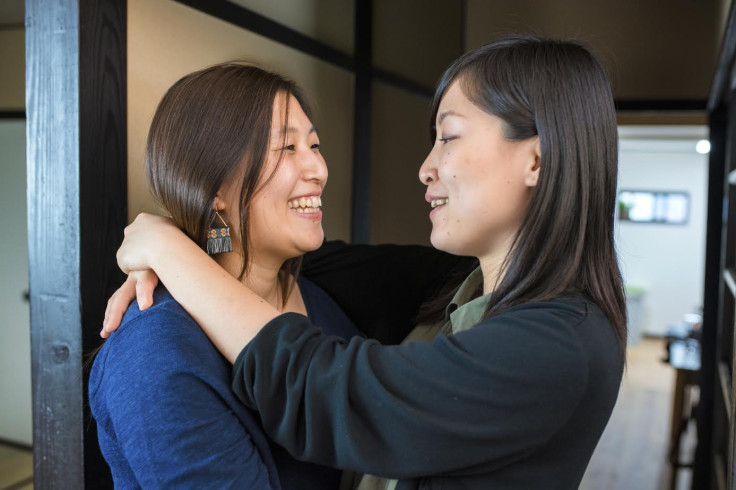Is there any truth to the portrait of a 'sexless Japan'?
This survey erases the existence of LGBT people, single parents, widows and divorcees.

Last Thursday, Japan's National Institute of Population and Social Security Research released the results of their survey on childbirth trends, which inspired a flood of articles in the English-language media on "sexless Japan." The headlines tell us all: "Why are almost half of Japan's millennials still virgins?" (CNN); "In sexless Japan, almost half of single young men and women are virgins: survey" (The Japan Times), and so on.
Whereas the survey asked a large array of questions on sex, marriage, and children, the two issues that received the most coverage in Japanese and English media are that almost 70% of unmarried men and 60% of unmarried women are not in a relationship, and 42% of men and 44.2% of women have never had a sexual relationship. In the English-language media, there is an overwhelming focus on the Japanese being "sexless" and "virgins".
But is there any truth to this portrait of a "sexless Japan"? This particular survey, in fact, has questionable premises, based on considering heterosexuality to be the norm. For example, one of the questions most focused on in the media was "Have you every had sexual intercourse with a member of the opposite sex?," which ignores homosexuality and bisexuality altogether.
The survey also indicates with alarm that the percentage of never-married persons aged 18 to 34 who answered that they have never had a sexual experience with the opposite sex increased for both sexes compared to 2010. However, when the 2016 data is compared to that from the early 1990s, the percent of male virgins is almost unchanged, while the percent of female virgins has decreased (the 1992 figures are: 41.5% of never married men between 18 to 34 were virgins, while 56.3% of women of the same demographic were virgins). The questions about relationship status also ignore same-sex relationships with the question "Are you currently in a relationship with the opposite sex?"
Moreover, this survey was conducted with both unmarried and married subjects aged 18-49 years old, but when analysing data from unmarried 18-34 year olds, only data from never-married individuals was used. And the analysis of the data from married couples only included those who were on their first marriage. Thus, the survey ignored divorcees and widows, regardless of their current marital status. It also does not seem to include unwed mothers and fathers.
The exclusion of people who have sexualities and relationships outside of the heterosexual norm, as well as divorcees, widows and single parents, is clearly a major flaw of this survey. It is only based on the idealised model of heterosexual singles who have never been married or had children, and married people who have never been divorced, with all others considered to be excluded outliers. The survey, which likely repeats the same questions in multiple years for the purpose of longitudinal comparison, does not not reflect the major social changes in Japan that relate to sexuality, partnership and marriage, but rather the more narrow norms that were prevalent when the survey-taking began some decades ago.

Moreover, it is worth considering the ways in which this problematic survey could reflect and support the direction that the current Japanese government is taking regarding Japan's low birthrate. Prime Minister Abe Shinzo proposed an idea, the "Dynamic Engagement of All 100 Million Citizens", in which one of his goals was to increase the birthrate from the current 1.4 children per woman to 1.8 children per woman. The birth rate issue is certainly a very high priority of the administration, yet there has been only very slow progress on the issue of governmental assistance in childrearing, especially concerning the creation of more daycare facilities.
Moreover, conservative national and local governments have taken the approach that the cause of Japan's low birth rate is that young people lack opportunities to meet potential marriage partners; hence their solution is for the government to host parties for single men and women and to create local centres and programs to assist in finding arranged marriage partners, all funded by taxpayers.
The low birthrate issue is therefore intimately tied to finding heterosexual marriage partners, and these survey results by the National Institute neatly support the government's emphasis on finding sexual partners through heterosexual marriage, believing that will cause the Japanese birthrate to rise. This vision, however, erases the existence of LGBT people, single parents, widows and divorcees, and only an extremely narrow approach to the low birth rate issue is presented.
Some of the media coverage in English about the survey does include one sentence on the exclusion of same-sex relationships, but the core message of the increase in "virgins" and "sexless-ness" in Japan remains the same. If this kind of survey, neglecting the existence of LGBT people, single parents, widows and divorcees, were to be conducted in the UK or any other Western nation by a government-supported national institute, wouldn't the media point out this glaring exclusion as a major flaw? The problems of this survey and the Japanese government's motives should be the core issues, and not the questionable, sensationalised assumption of "sexless Japan".
Tomomi Yamaguchi is an Associate Professor of Anthropology at Montana State University. Her research interests are the cultural construction of gender and sexuality; feminism and social movements; and popular culture in post-war Japan.
© Copyright IBTimes 2025. All rights reserved.























